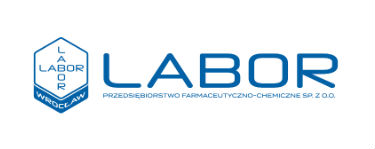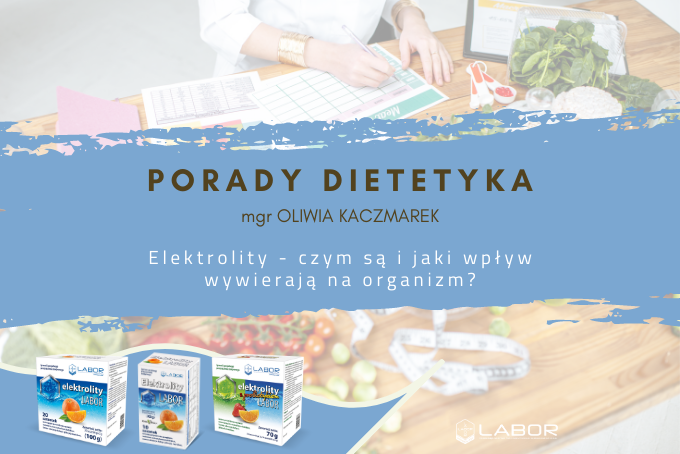To maintain health and the proper functioning of the orgasm, it is necessary to maintain the water and electrolyte balance. Mineral salt ions, or electrolytes, which are naturally present in the body fluids of our body (blood, plasma) are responsible for this.
What are electrolytes and why are they so important to health?
Electrolytes are aqueous solutions of ions which, due to their structure, have electric charges (negative or positive). The most important of them are positively charged cations: sodium, potassium, calcium, magnesium and negative chloride and bicarbonate ions. The main source of electrolytes for our body are the fluids we provide (water, juices) and food. Electrolytes have many important functions.
Functions
Sodium (Na+)
? is responsible for the proper functioning of the nervous and muscular systems,
? regulates muscle tone,
? together with potassium, it helps to maintain the acid-base balance,
? determines the volume of intracellular and extracellular fluids,
? is a component of the hydrochloric acid in the stomach.
Potassium (K+)
? helps in the proper functioning of the cardiovascular system,
? normalizes the heart rhythm,
? regulates proper blood pressure,
? together with Na + it conducts nerve impulses between cells,
? activates many body enzymes,
? is involved in the metabolism of nutrients: carbohydrates and proteins.
Magnesium (Mg2+)
? affects the proper functioning of the cardiovascular system,
? is responsible for the proper contractility of muscles,
? provides energy to the body’s tissues and cells.
Calcium (Ca2+)
? used by the body to maintain acid-base balance,
? seals blood vessels,
? affects the proper functioning of digestive enzymes.
Chlorine (Cl-)
? is present in gastric juice,
? allows you to maintain the proper osmotic pressure of blood and body fluids,
? activates digestive enzymes (amylase).
Bicarbonates (HCO3-)
? alkalize gastric juice,
? regulate blood pH,
? help control the sugar economy.
Causes of electrolytes deficiency
Due to the ongoing metabolic processes in the body, the concentration of electrolytes is not constant, therefore the electrolyte imbalance can quickly occur. The unpleasant effects can be felt in the case of a decrease in the level of one of the electrolytes, e.g. potassium, the deficiencies of which are dangerous, especially for people suffering from cardiovascular diseases. The elderly, breastfeeding women and children are also a sensitive group to disturbances in the water and electrolyte balance.
Loss of electrolytes usually occurs during the course of viral or bacterial infections, accompanied by vomiting, persistent diarrhea and fever. Both intense exercise and high ambient temperatures contribute to elevated body temperature, leading to dehydration and loss of electrolytes with sweat. Another cause is diseases that disturb the level of electrolytes, e.g. kidney disease, malabsorption and the use of diuretics and laxatives. Electrolyte deficiency can also be caused by frequent drinking of coffee and alcohol, low intake of other fluids or a deficient diet.
Symptoms of electrolyte deficiency
– tiredness, apathy
– nausea
– drop in concentration
– irritability
– headache or dizziness
– muscle cramps
– increase in blood pressure
– heart problems
How to replenish electrolytes?
The easiest way to balance the electrolyte concentration is to supply water regularly, preferably medium or high mineralized water. The degree of mineralization depends on the concentration of ions in milligrams per liter (mg / l). In moderately mineralized waters it ranges from 500 to 1500 mg / l and in highly mineralized waters it is above 1500 mg / l. The composition of mineral waters is mainly based on bicarbonates and macronutrients such as calcium, magnesium, potassium and sodium.
Another way to replenish electrolytes are natural products containing the appropriate elements, i.e. magnesium, potassium and calcium. Some of the better sources of potassium are: tomato juice, legumes, cocoa, avocado, potatoes, parsley, dried fruit, black currants, nuts, seeds and grains. In the case of magnesium, large amounts of this element can be found in cocoa, buckwheat, millet, wheat bran, pumpkin seeds, almonds, sesame, bananas and figs. On the other hand, products particularly rich in calcium include: milk and its products, sprats, kale, almonds, poppy seeds, dried figs and tofu. Sodium is an ingredient whose consumption should be limited, because we provide it in excess in the diet. In some cases of electrolyte deficiency, consumption of products containing higher amounts of electrolytes can be increased. The main sources of sodium will be pickled cucumbers and cabbage, olives, rennet cheeses, cheese and bread.
During prolonged infections, manifested by diarrhea and vomiting, the use of oral rehydration fluid (ORF) qualified as food for special medical purposes may be helpful. Such preparations are offered in the form of a powder for preparation and drinking. The World Health Organization (WHO) and UNICEF have developed a low-osmolarity irrigation fluid formulation that will ensure optimal hydration using physiological water absorption mechanisms. Some products (eg Elektrolity Labor) additionally have a pleasant, fruity taste, making them ideal even for children.
Let’s remember when and in what cases our body is exposed to greater loss of water and electrolytes. So let’s try to follow a proper diet and regularly provide fluids to avoid any undesirable consequences for this reason.
How to calculate the body’s fluid requirements?
The body’s need for water depends on many factors, including age, gender, physical activity, ambient temperature, climate and the composition of the diet. The human body does not store more water, so it must be constantly supplied.
According to the latest standards established by the Food and Nutrition Institute (FNI), the demand for water at the level of sufficient consumption (AI) is as follows:
? Infants (0-0.5 years): 700-1000 ml
? Infants (0.5-1 years): 800-1000 ml
? Children (1-3 years): 1250 ml
? Children (4-6 years): 1600 ml
? Children (7-9 years): 1750 ml
? Boys (10-12 years): 2100 ml
? Boys (13-15 years): 2,350 ml
? Boys (16-18 years): 2500 ml
? Girls (10-12 years): 1900 ml
? Girls (13-15 years): 1950 ml
? Girls (16-18 years): 2000 ml
? Men: 2500 ml
? Women: 2000 ml
? Pregnant women: 2300 ml
? Breastfeeding women: 2700 ml
Additionally, there are several methods to calculate the amount of water that should be consumed per day:
Method 1:
There is 30 ml of water for every kilogram of body weight.
Example: A person weighing 70 kg should provide 2,100 ml of fluid per day.
Method 2:
For the first 10 kg of our body weight, we assume the requirement of 100 ml / kg
The next 10 kg is 50 ml / kg
Each next kilogram – 20 ml / kg
Example: A person weighing 70 kg will require 2,500 ml of water.
(10 kg x 100 ml) + (10 kg x 50 ml) + (50 kg x 20 ml) = 2500 ml
Method 3:
For every 1 kcal there is 1 ml of water (1.5 ml / kcal in children).
Example: The water requirement of a person who will consume 2,500 kcal per day will be 2,500 ml.
There are situations where the need for water increases. This applies to physically active people who are on a high-protein diet or diet high in dietary fiber, or people suffering from diabetes and kidney disease. An indication to increase the amount of water drunk is also a fever (for each degree above 37C, you should consume an additional 500 ml of liquid).
Do you know that:
? Normal electrolyte values in the body are:
– sodium: 135 – 145 mmol / L
– potassium: 3.5 – 5.1 mmol / L
– magnesium: 0.65 – 1.20 mmol / L
– calcium: 2.25 – 2.75 mmol / L
? The elderly, breastfeeding women and children are the most sensitive to water and electrolyte disturbances.
? Isotonic dehydration is the loss of electrolytes in proportion to the loss of water. Such dehydration causes diarrhea, polyuria, and edema.
? Hypertonic dehydration, where there is a loss of a disproportionate amount of water in relation to electrolytes.
? Hypotonic dehydration. The concentration of electrolytes is too low for the water.
? Electrolyte levels can be checked by testing a venous blood sample. The indications for the examination are the following ailments, such as swelling, irregular blood pressure or heart disorders. Thanks to the result, shortages can be reacted early.
? Symptoms of low plasma sodium (hyponatraemia) are headache, weakness, nausea, vomiting, anorexia or confusion.
? Hyperkalemia means too much potassium in your blood.
? Too much sodium causes hypertensive disease.
? Potassium deficiency disrupts the proper functioning of the heart, magnesium deficiency leads to the feeling of weakness and fatigue, calcium deficiency leads to tetany.
? Electrolytes are ions of mineral salts and therefore have a salty aftertaste.
? They are excreted from the body in sweat and urine.
? Due to the appropriate osmolarity, which is similar to the body fluids in the body, Oral Irrigation Fluid (ORF) is better absorbed by the body.
? The advantage of ORF is a simple form of use.
? ORF is the simplest and most effective way to prevent dehydration caused by diarrhea or vomiting.
AUTHOR: mgr Oliwia Kaczmarek




